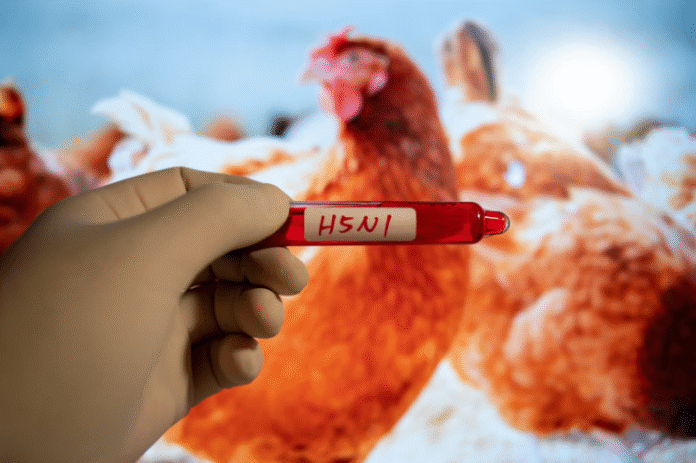By Snigdha Chakravarti
In 2022, the bird flu virus broke out to more than 165 million birds, later spreading to over 970 herds of cattle and dairy cows. Since then, bird flu has infected 70 people in the US, one of whom has died. This has provoked fears of another large virus outbreak in humans in the future. Dr. Jacon Lemieux, the assistant professor of medicine and infectious disease specialist at the Massachusetts General Hospital believes “we are living next to a volcano, and it may erupt or it may not. But we need to be prepared for the possibility of a pandemic.”
The avian influenza had come to the US in 2014, but soon disappeared. However, it re-emerged in 2022. The strain of this virus is called the H5N1 clade 2.3.4.4b virus, and a pathogenic subunit of this virus first appeared in birds in China in 1996. Over time, multiple subunits have arisen as a result of mutations. In a typical virus, it accumulates genetic mutations over time as it spreads from host to host, thus resulting in a variety of strains, as seen by the various subunits of H5N1. The mutation in this particular strain of H5N1, in the gene encoding for the PB2 (polymerase base 2) proteins, results in more efficient virus replication in hosts. Although there are vaccines for the H5N1 virus, they are outdated as they are pre-pandemic, so to make a vaccine with the current strain, investment in national clinical trial infrastructure is imperative. Therefore, humans currently do not have immunity to the H5N1 strain since no effective vaccine has been developed as yet.
Currently, there are efforts to make a vaccine for this strain of H5N1, but the Trump administration has seemed to deter such efforts by cutting federal medical research funding and firing federal workers. The US Department of Agriculture, for instance, fired employees who were researching the bird flu. Additionally, in the Center for Disease Control and Prevention, a hub for public health and communication, workers have been fired. The CDC has played a role in surveillance of H5N1 by using targeted surveillance of people exposed to infected animals and testing dairy workers, and it has also made concerted efforts with the US Influenza Surveillance, which analyzes influenza specimens. Such efforts to develop a vaccine and maintain surveillance are at stake with little support from the current Trump administration.
Fortunately, however, the H5N1 virus are mild, though historically, they have been quite severe. Most of the people affected with bird flu have conjunctivitis (pink eye) and influenza-like symptoms. Hospitalization is rare, and no human-to-human transmission has been reported as yet. Although the public risk for bird flu is low right now, those who are exposed to poultry and dairy cows are considered to be at a higher risk.
A pressing question regarding bird flu concerns the consumption of poultry and dairy products. There is no safety hazard posed by eating products like poultry, eggs, and milk, as these products are thoroughly monitored for viruses, including H5N1. Pasteurization in milk, for instance, inactivates the virus, but consuming milk raw is dangerous since the virus undergoes replication in the mammary glands of cows. Additionally, most eggs in grocery stores are not from chickens with bird flu since the production of eggs in affected chickens are greatly hindered. Even if viruses do somehow get into consumer products, they are killed by the heat from cooking.
The overall risk for bird flu is meager at the moment, but this may change as experts warn of the virus’s evolution. As research investigates further, a possible pandemic may be there in the future, though for now, there is no need to worry about one.

